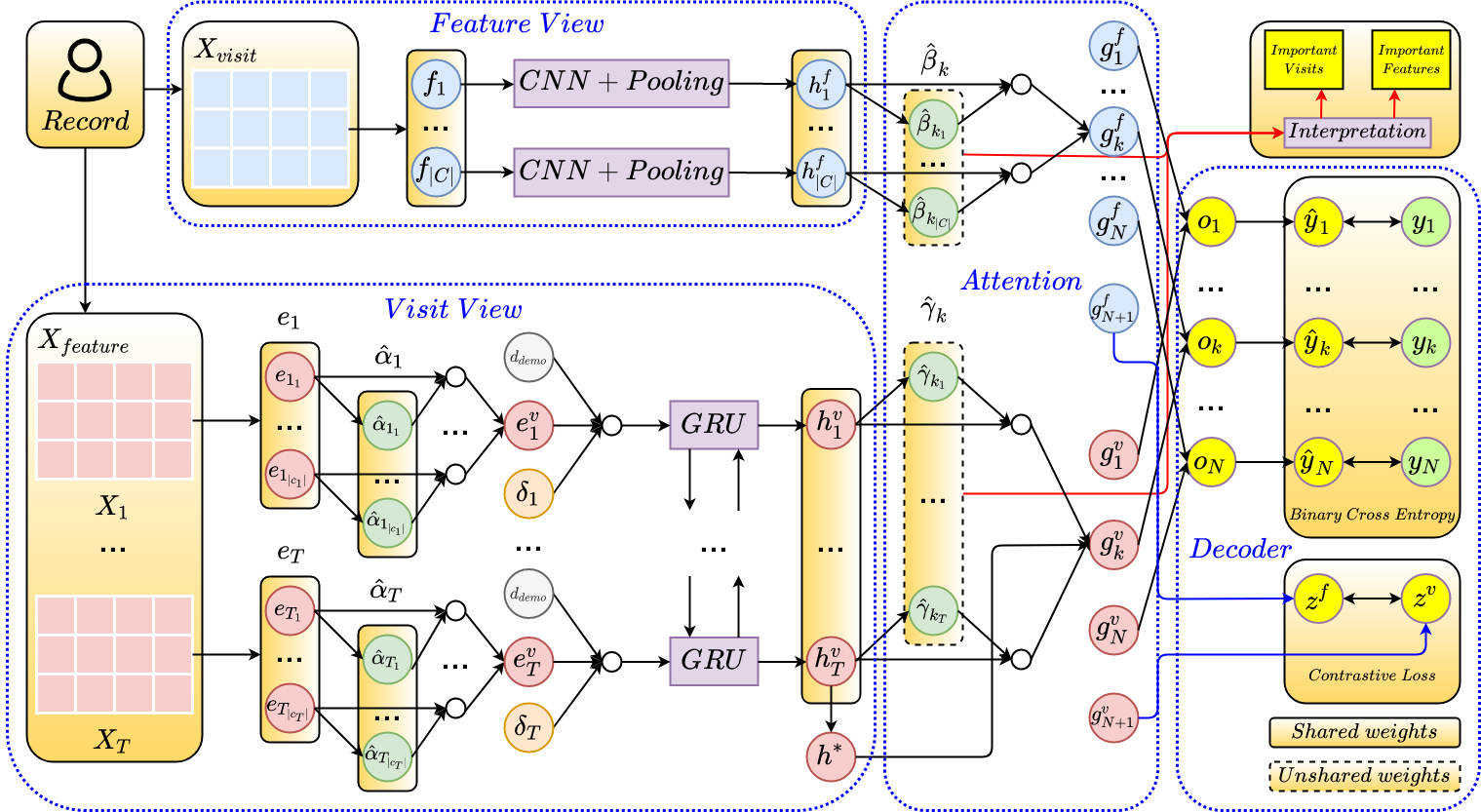Cardiac Complication Risk Profiling for Cancer Survivors via Multi-View Multi-Task Learning
Complication risk profiling is a key challenge in the healthcare domain due to the complex interaction between heterogeneous entities (e.g., visit, disease, medication) in clinical data. With the availability of real-world clinical data such as electronic health records and insurance claims, many deep learning methods are proposed for complication risk profiling. However, these existing methods face two open challenges. First, data heterogeneity relates to those methods leveraging clinical data from a single view only while the data can be considered from multiple views (e.g., sequence of clinical visits, set of clinical features). Second, generalized prediction relates to most of those methods focusing on single-task learning, whereas each complication onset is predicted independently, leading to suboptimal models. We propose a multi-view multi-task network (MuViTaNet) for predicting the onset of multiple complications to tackle these issues. In particular, MuViTaNet complements patient representation by using a multi-view encoder to effectively extract information by considering clinical data as both sequences of clinical visits and sets of clinical features. In addition, it leverages additional information from both related labeled and unlabeled datasets to generate more generalized representations by using a new multi-task learning scheme for making more accurate predictions. The experimental results show that MuViTaNet outperforms existing methods for profiling the development of cardiac complications in breast cancer survivors. Furthermore, thanks to its multi-view multi-task architecture, MuViTaNet also provides an effective mechanism for interpreting its predictions in multiple perspectives, thereby helping clinicians discover the underlying mechanism triggering the onset and for making better clinical treatments in real-world scenarios.
PDF Abstract

